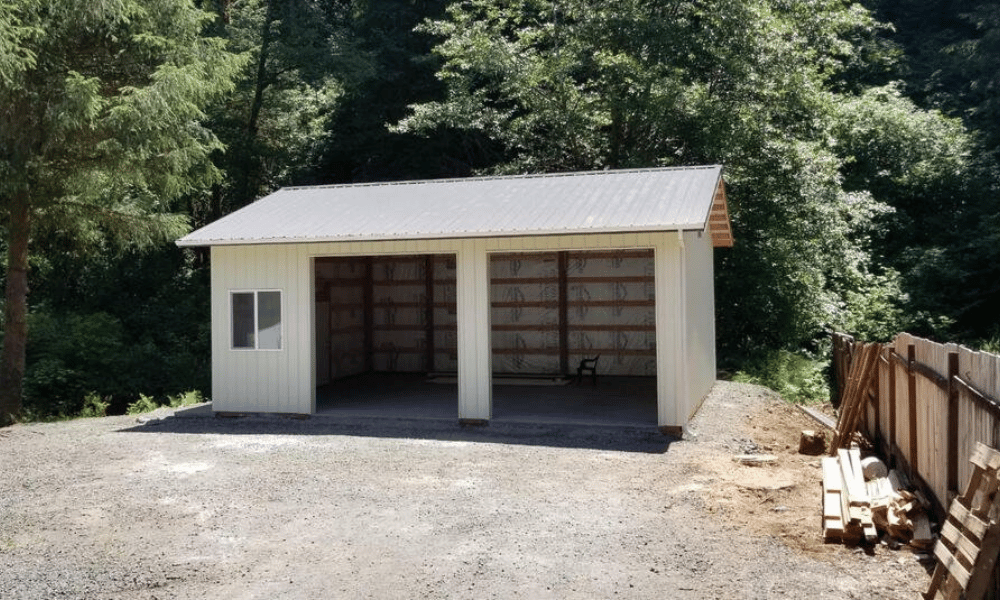Introduction
When it comes to building or renovating your space, particularly a Pole Barn Garage, insulation is often one of the most overlooked aspects. However, choosing the right type of insulation is crucial for maintaining energy efficiency, comfort, and longevity. With options like reflective and non-reflective insulations available, understanding their differences can empower you to make an informed decision. In this comprehensive guide, we will explore the nuances of both types of insulation, providing you with a detailed comparison that will help you choose what fits your needs best.
Understanding Insulation: The Basics
What is Insulation?
At its core, insulation serves as a barrier to heat flow. It helps keep your space warm in the winter and cool in the summer. Insulation materials are designed to resist heat transfer by trapping air or reflecting heat away from living spaces.
Why is Insulation Important?
Proper insulation contributes significantly to energy efficiency. It reduces heating and cooling costs while enhancing comfort levels within your home or garage. For instance, if you're using your Pole Barn Garage as Pole Barn Garage Builders in Springfield a workshop or storage facility, insulation can create a more stable environment for your tools and belongings.
Types of Insulation: An Overview
Insulation can be broadly classified into two categories:

Reflective Insulations – These typically consist of materials that reflect radiant heat.
Non-Reflective Insulations – These absorb heat rather than reflect it.
In the following sections, we'll delve deeper into each type.
A Comparative Guide to Reflective and Non-Reflective Insulations
Reflective Insulations: How They Work
Reflective insulations utilize shiny surfaces—generally aluminum foil—to reflect radiant heat away from living spaces. This makes them particularly effective in warmer climates where cooling is essential.
Benefits of Reflective Insulations
Energy Efficiency: By reflecting radiant heat, these insulations reduce cooling costs significantly. Lightweight: Most reflective materials are lighter than traditional insulations. Easy Installation: They generally come in rolls or sheets that are easy to handle.Limitations of Reflective Insulations
Less Effective in Cold Climates: If you live somewhere cold, reflective insulation may not provide adequate warmth. Cost: Often more expensive than traditional forms of insulation.Non-Reflective Insulations: A Closer Look
Harrisburg pole barn garage optionsNon-reflective insulations usually consist of fiberglass, cellulose, or foam board materials that trap air pockets to resist heat flow instead of reflecting it.
Benefits of Non-Reflective Insulations
Versatile: Effective in both hot and cold climates. Cost-Effective: Generally cheaper than reflective options. Soundproofing Qualities: Many non-reflective materials also offer sound absorption benefits.Limitations of Non-Reflective Insulations
Weight and Bulkiness: Often heavier and bulkier than reflective alternatives. Installation Challenges: Can require more effort during installation due to their weight.Comparative Analysis
To understand how these two types stack up against one another, let us compare them based on several key factors:
| Factor | Reflective Insulation | Non-Reflective Insulation | |-----------------------|----------------------|---------------------------| | Energy Efficiency | High (in warm climates)| Moderate (year-round) | | Installation Ease | Easy | Moderate | | Cost | Higher | Lower | | Climate Suitability | Hot climates | All climates | | Material Weight | Light | Heavy |
Which One Should You Choose for Your Pole Barn Garage?
When deciding between reflective and non-reflective insulations for your Pole Barn Garage, consider climate conditions as well as intended use—whether it's primarily for storage, workspaces, or recreational activities.
Installation Process
Installing Reflective Insulation
Installing reflective insulation involves:
Measuring the area where you'll install it. Cutting the material to size. Securing it with staples or adhesive tape against walls or rafters.Installing Non-Reflective Insulation
For non-reflective:
Similar measuring and cutting apply. Use batts or rolls depending on wall cavities. Ensure tight fits without gaps for maximum effectiveness.Maintenance Tips
Regardless of which type you choose:
- Regularly inspect for signs of moisture damage. Check seals and edges to ensure they remain intact over time.
Performance Under Extreme Conditions
How do both types perform under harsh weather conditions?
Reflective Under Heatwaves
In extreme summer temperatures, reflective insulation shines by keeping indoor spaces cooler while reducing reliance on air conditioning systems significantly.
Non-Reflective During Winter Storms
Conversely, during winter storms, non-reflective options excel at retaining warmth inside structures like your pole barn garage when properly installed with no gaps.
FAQs About Reflective vs Non-Reflective Insulation
li21/ol8/li22li22/ol9li23# Which type is better for a hot climate?- Generally speaking, if you're in a hot climate, reflective insulation tends to be more effective due to its ability to reflect heat away from living spaces.
- Yes! Many buildings utilize both forms strategically—for instance using reflective in roof areas while employing non-reflectives along walls for comprehensive coverage.
- Generally speaking yes; reflective installations tend toward easier handling compared with bulky batts used in some non-reflectives!
Conclusion
Choosing between reflective and non-reflective insulation doesn’t have to be overwhelming; with this comparative guide at your fingertips! Whether you're upgrading an existing structure or building anew—especially if you're focusing on something like a pole barn garage—understanding the differences will guide you toward making an informed choice tailored specifically for your needs! Keep climate considerations in mind as well as budget constraints while weighing pros versus cons before committing—your comfort depends on it!